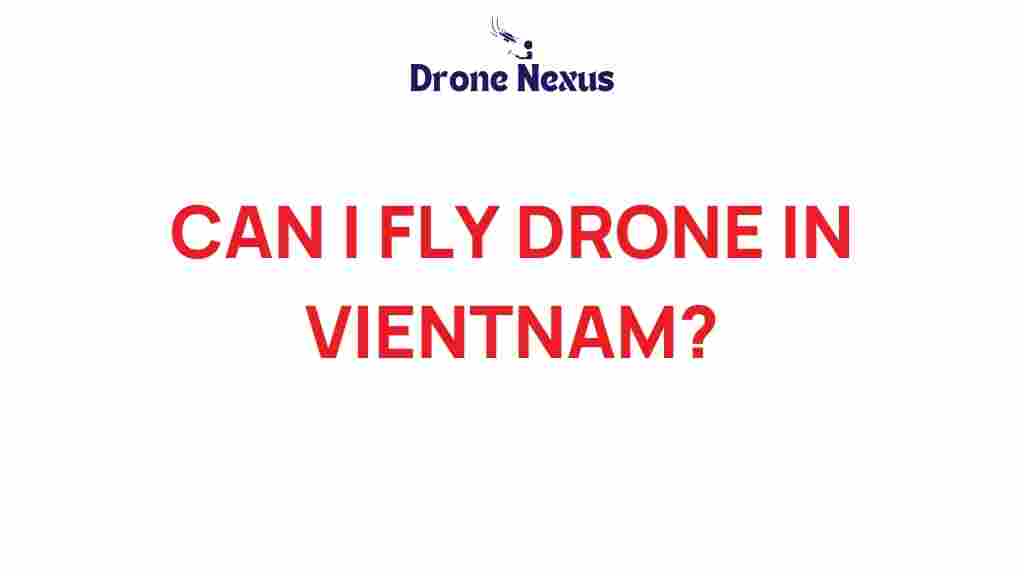Drone Regulations: A Comprehensive Guide to Flying Drones in Vietnam
As the drone industry continues to grow globally, many enthusiasts are eager to explore the skies with their UAVs (Unmanned Aerial Vehicles). Vietnam, with its stunning landscapes and vibrant cities, has become a popular destination for drone pilots. However, before you take to the skies, it’s essential to understand the drone regulations in Vietnam. This article will guide you through everything you need to know about flying drones in this beautiful country.
Understanding Drone Regulations in Vietnam
Drone regulations in Vietnam are governed by the Ministry of Transport and the Ministry of Information and Communications. The laws are designed to ensure safety, privacy, and security. Here’s a detailed look at the critical aspects of flying drones in Vietnam:
- Registration: Drones weighing more than 250 grams must be registered with the Civil Aviation Authority of Vietnam (CAAV).
- Licensing: Operators of drones over 25 kg must hold a valid pilot’s license.
- Flight Permission: You must obtain permission for flying drones in specific areas, especially in urban settings or near airports.
- Restricted Areas: Certain zones, such as military bases, government buildings, and other sensitive locations, are strictly off-limits.
Step-by-Step Guide to Flying a Drone in Vietnam
Navigating the drone regulations in Vietnam can seem daunting, but following this step-by-step guide can simplify the process:
1. Know Your Drone
Before you embark on your flight, familiarize yourself with your drone’s specifications and capabilities. Understand its weight, features, and any specific requirements that come with it. If your drone exceeds 250 grams, registration is mandatory.
2. Register Your Drone
If your drone is above the weight limit, you must register it with the CAAV. This process usually involves:
- Filling out the registration form.
- Providing proof of purchase and drone specifications.
- Paying the registration fee.
Once registered, ensure you have the registration certificate on hand while flying.
3. Obtain Necessary Permissions
Before flying in specific areas, you may need to apply for flight permissions. This typically involves:
- Submitting a flight plan to the CAAV.
- Detailing the purpose of your flight.
- Indicating the intended flight area and duration.
Always plan your flights ahead of time to avoid any last-minute complications.
4. Understand Local Laws and Regulations
Each city or region may have its own local regulations. Always check with local authorities or drone clubs for specific rules regarding drone flights in that area.
5. Prepare for Your Flight
Before taking off, ensure that:
- Your drone is in good working condition.
- All batteries are fully charged.
- You have a clear flight plan and are aware of the weather conditions.
6. Respect Privacy and Property
Flying a drone comes with responsibilities. Avoid flying over private property without permission, and be mindful of people’s privacy. Respect local customs and be considerate of those around you.
7. Fly Responsibly
Always adhere to the following flight rules:
- Maintain visual line of sight with your drone.
- Do not exceed an altitude of 120 meters.
- Avoid flying near airports or crowded areas.
- Never fly at night unless you have special permission.
Troubleshooting Common Issues
Even with the best preparations, you may encounter some issues while flying your drone. Here are some common problems and tips on how to solve them:
1. Connectivity Issues
If your drone loses connection with the controller:
- Stay calm and allow the drone to return to the last known position.
- Check for any interference from other electronic devices.
- Ensure your controller is fully charged.
2. GPS Signal Loss
In areas with poor GPS signal:
- Fly at lower altitudes to regain signal.
- Move to an open area away from tall buildings or trees.
3. Battery Issues
If you notice a battery drain faster than expected:
- Check the battery’s health and lifespan.
- Ensure you are not overloading the drone with additional weight.
Where to Get More Information
For the latest updates and detailed information on drone regulations in Vietnam, consider visiting the official website of the Civil Aviation Authority of Vietnam. They provide comprehensive resources on drone laws and flight regulations.
Additionally, connecting with local drone communities can be beneficial. They often share insights, experiences, and updates on regulations that may not be widely known.
Conclusion
Flying a drone in Vietnam can offer breathtaking views and unique photography opportunities, but understanding and adhering to the drone regulations is crucial. From registration to flight permissions, being well-informed will ensure a safe and enjoyable flying experience. Always respect the environment and local laws, and you’ll find that flying a drone in Vietnam can be a rewarding adventure.
For more tips on drone flying and regulations, feel free to explore our other articles on drone safety and best practices here.
This article is in the category Safety and created by DroneNexus Team
